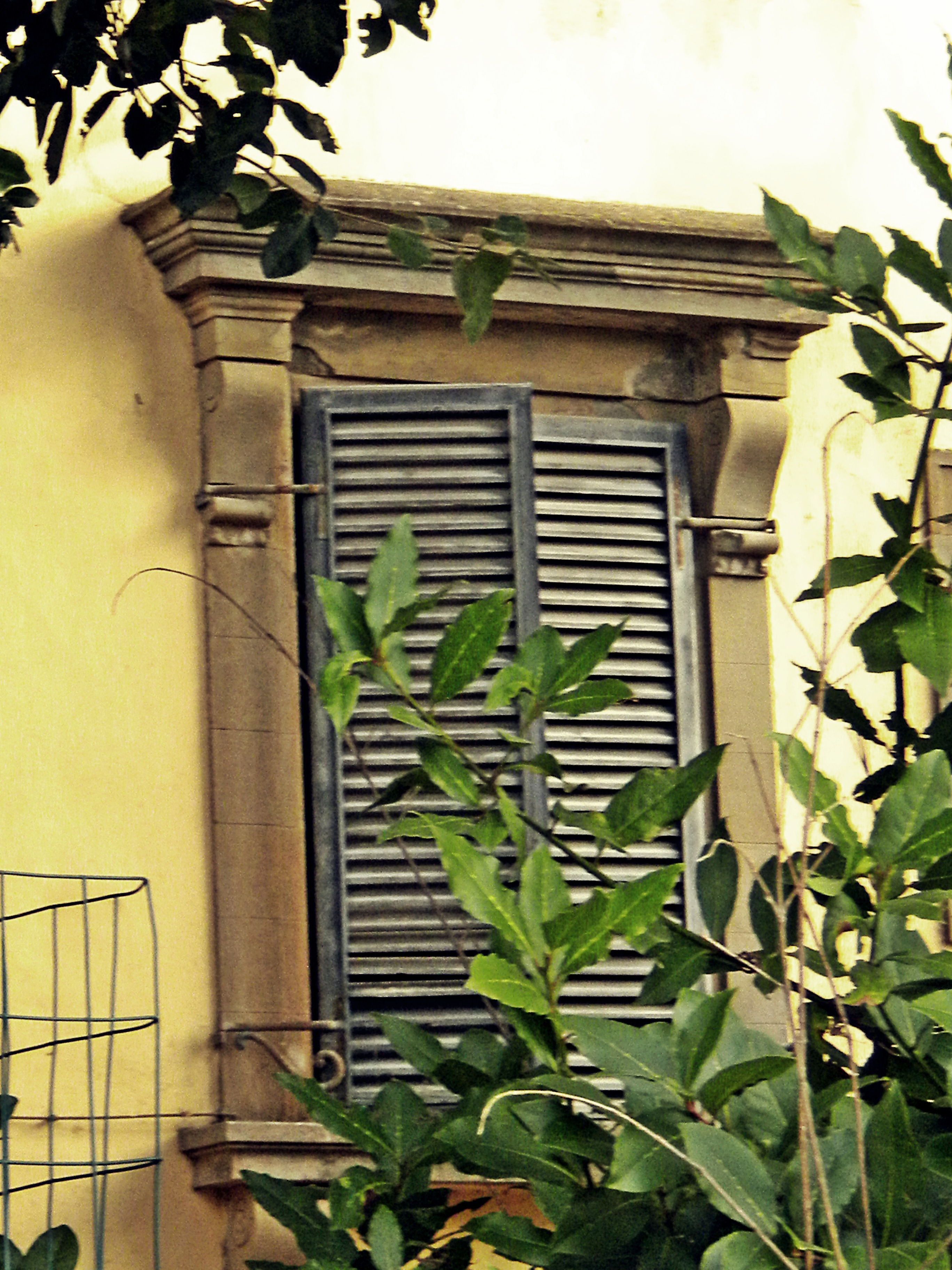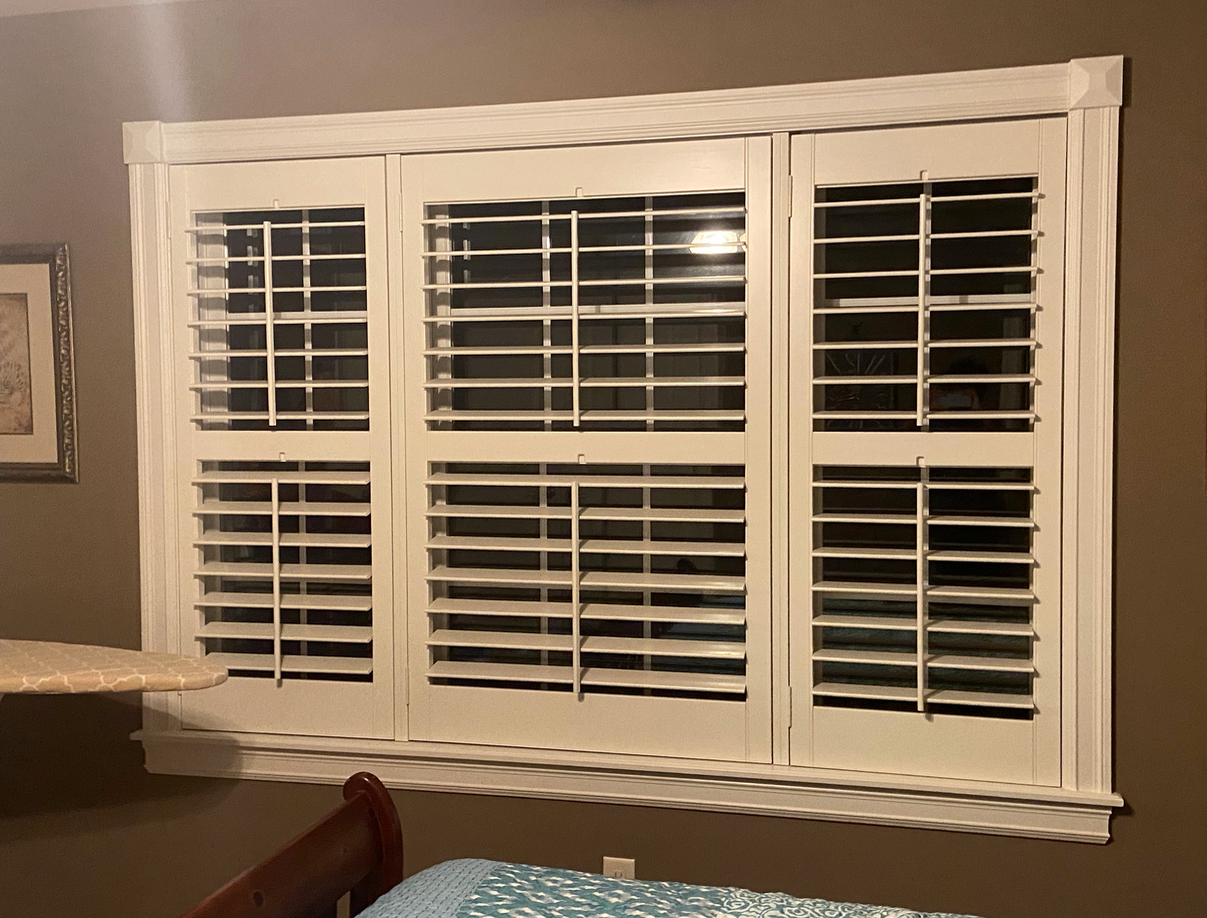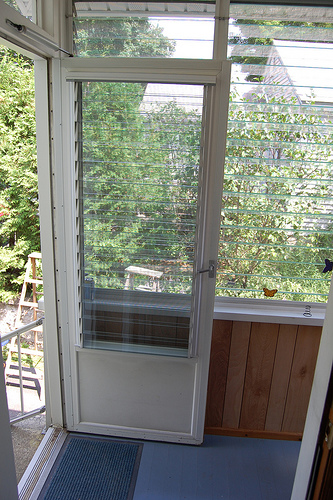|
Louver
A louver (American English) or louvre (Commonwealth English; American and British English spelling differences#-re, -er, see spelling differences) is a window blind or window shutter, shutter with horizontal wikt:slat, slats that are angled to admit light and air, but to keep out rain and direct sunshine. The angle of the slats may be adjustable, usually in blinds and windows, or fixed, such as in shutters. History Louvers originated in the Middle Ages as lantern-like constructions in wood that were fitted on top of roof holes in large kitchens to allow ventilation while keeping out rain and snow. They were originally rather crude constructions consisting merely of a barrel. Later, they evolved into more elaborate designs made of pottery, taking the shape of faces where the smoke and steam from cooking would pour out through the eyes and mouth, or into constructions that were more like modern louvers, with slats that could be opened or closed by pulling on a string. C ... [...More Info...] [...Related Items...] OR: [Wikipedia] [Google] [Baidu] |
Window Shutter
A window shutter is a solid and stable window covering usually consisting of a frame of vertical stiles and horizontal rails (top, centre and bottom). Set within this frame can be louvers (both operable or fixed, horizontal or vertical), solid panels, fabric, glass and almost any other item that can be mounted within a frame. Shutters may be employed for a variety of reasons, including controlling the amount of sunlight that enters a room, to provide privacy, security, to protect against weather or unwanted intrusion or damage and to enhance the aesthetics of a building. Depending on the application, and the construction of the window frame, shutters can be mounted to fit within the opening or to overlap the opening. The term window shutter includes both interior shutters, used on the inside of a house or building, and exterior shutters, used on the outside of a structure. On some styles of buildings it is common to have shutters to cover the doors as well as the windows. Int ... [...More Info...] [...Related Items...] OR: [Wikipedia] [Google] [Baidu] |
Window Deflector
A window deflector is a transparent plastic fitting, mounted above the doors of some automobiles, to protect the interior from rain or other precipitation (meteorology), precipitation in case of slightly opened windows. Deflectors may also be fitted to sunroofs to change the flow of air. Types Based on the way wind deflectors are installed, they may be classified as follows: In-Channel Installed into the upper window channel and kept in place due to tension; sometimes an additional thin strip of adhesive tape is used. Stick-on The deflector has a strip of self-adhesive tape for mounting. This allows mounting a deflector above the window, to either the window frames, or the roof if the windows are frameless. Similar equipment Hood protector A hood protector or bug guard is a similar product for protecting the paintwork on the front of the vehicle against insects. Rear window louvers A Rear window louver or rear window blind ( or ) is a type of window blind mounted to ... [...More Info...] [...Related Items...] OR: [Wikipedia] [Google] [Baidu] |
Jalousie Window
A jalousie window (, ), louvred window (Australia, New Zealand, Pacific Islands, Southeast Asia, United Kingdom), jalousie, or jalosy is a window composed of parallel glass, acrylic, or wooden louvres set in a frame. The louvres are joined onto a track so that they may be tilted open and shut in unison to control airflow, usually by turning a crank. Etymology ''Jalousie'' is the French word for "jealousy". It originated in 18th century France from the Italian word ''geloso'', which means "jealous" or "screen", as in to screen something from view. Because of their slatted louvres, jalousie windows protect the interior of the house from jealous, peering eyes (when not made of a transparent material like glass). Design Joseph W. Walker of Malden, Massachusetts, applied for a US patent for a basic louvered window in 1900. He was issued patent no. 687705 on November 26, 1901. A popular hand-cranked glass, aluminum and screen window combination was later designed by American en ... [...More Info...] [...Related Items...] OR: [Wikipedia] [Google] [Baidu] |
Window Blind
A window blind is a type of window covering. There are many different kinds of window blinds which use a variety of control systems. A typical window blind is made up of several long horizontal or vertical slats of various types of hard material, including wood, plastic or metal which are held together by cords that run through the blind slats. Vertical blinds run along a track system which can tilt open and closed and move side-to-side. Window blinds can be manoeuvred with either a manual or remote control by rotating them from an open position, with slats spaced out, to a closed position where slats overlap and block out most of the light. There are also several types of window coverings, called shades, that use a single piece of soft material instead of slats. The term window blinds can also be used to describe window coverings more broadly. In this context window blinds include almost every type of window covering, whether it is a hard or soft material; i.e. shutters, rol ... [...More Info...] [...Related Items...] OR: [Wikipedia] [Google] [Baidu] |
1970 AMC Javelin SST With 304 V8 Black Red C-stripe AMO 2015 Meet 2of4
Year 197 ( CXCVII) was a common year starting on Saturday of the Julian calendar. At the time, it was known as the Year of the Consulship of Magius and Rufinus (or, less frequently, year 950 ''Ab urbe condita''). The denomination 197 for this year has been used since the early medieval period, when the Anno Domini calendar era became the prevalent method in Europe for naming years. Events By place Roman Empire * February 19 – Battle of Lugdunum: Emperor Septimius Severus defeats the self-proclaimed emperor Clodius Albinus at Lugdunum (modern Lyon). Albinus commits suicide; legionaries sack the town. * Septimius Severus returns to Rome and has about 30 of Albinus's supporters in the Senate executed. After his victory he declares himself the adopted son of the late Marcus Aurelius. * Septimius Severus forms new naval units, manning all the triremes in Italy with heavily armed troops for war in the East. His soldiers embark on an artificial canal between the Tigris ... [...More Info...] [...Related Items...] OR: [Wikipedia] [Google] [Baidu] |
Hydrostatic Pressure
Hydrostatics is the branch of fluid mechanics that studies fluids at hydrostatic equilibrium and "the pressure in a fluid or exerted by a fluid on an immersed body". The word "hydrostatics" is sometimes used to refer specifically to water and other liquids, but more often it includes both gases and liquids, whether Compressible flow, compressible or Incompressible flow, incompressible. It encompasses the study of the conditions under which fluids are at rest in Mechanical equilibrium, stable equilibrium. It is opposed to ''fluid dynamics'', the study of fluids in motion. Hydrostatics is fundamental to ''hydraulics'', the engineering of equipment for storing, transporting and using fluids. It is also relevant to geophysics and astrophysics (for example, in understanding plate tectonics and the anomalies of the Gravity of Earth, Earth's gravitational field), to meteorology, to medicine (in the context of blood pressure), and many other fields. Hydrostatics offers physical expl ... [...More Info...] [...Related Items...] OR: [Wikipedia] [Google] [Baidu] |
Flood
A flood is an overflow of water (list of non-water floods, or rarely other fluids) that submerges land that is usually dry. In the sense of "flowing water", the word may also be applied to the inflow of the tide. Floods are of significant concern in agriculture, civil engineering and public health. Environmental issues, Human changes to the environment often increase the intensity and frequency of flooding. Examples for human changes are land use changes such as deforestation and Wetland conservation, removal of wetlands, changes in waterway course or flood controls such as with levees. Global environmental issues also influence causes of floods, namely climate change which causes an Effects of climate change on the water cycle, intensification of the water cycle and sea level rise. For example, climate change makes Extreme weather, extreme weather events more frequent and stronger. This leads to more intense floods and increased flood risk. Natural types of floods include riv ... [...More Info...] [...Related Items...] OR: [Wikipedia] [Google] [Baidu] |
Flood Opening
A flood opening or flood vent (also styled floodvent) is an orifice in an enclosed structure intended to allow the free passage of water between the interior and exterior. United States In the United States, flood openings are used to provide for the automatic equalization of hydrostatic pressure on either side of a wall. Building codes usually require the installation of flood openings in the walls of structures located in A-type flood zones recognized by the Federal Emergency Management Agency. Various agencies in the United States define necessary characteristics for flood openings. The NFIP Regulations and Building Codes require that any residential building constructed in Flood Zone Type A have the lowest floor, including basements, elevated to or above the Base Flood Elevation (BFE). Enclosed areas are permitted under elevated buildings provided that they meet certain use restrictions and construction requirements such as the installation of flood vents to allow for the auto ... [...More Info...] [...Related Items...] OR: [Wikipedia] [Google] [Baidu] |
Mirror
A mirror, also known as a looking glass, is an object that Reflection (physics), reflects an image. Light that bounces off a mirror forms an image of whatever is in front of it, which is then focused through the lens of the eye or a camera. Mirrors reverse the direction of light at an angle equal to its incidence. This allows the viewer to see themselves or objects behind them, or even objects that are at an angle from them but out of their field of view, such as around a corner. Natural mirrors have existed since Prehistory, prehistoric times, such as the surface of water, but people have been manufacturing mirrors out of a variety of materials for thousands of years, like stone, metals, and glass. In modern mirrors, metals like silver or aluminium are often used due to their high reflectivity, applied as a thin coating on glass because of its naturally smooth and very Hardness (materials science), hard surface. A mirror is a Wave (physics), wave reflector. Light consists ... [...More Info...] [...Related Items...] OR: [Wikipedia] [Google] [Baidu] |
Juha Leiviskä
Juha Ilmari Leiviskä (17 March 1936 – 9 November 2023) was a Finnish architect and designer. He was especially known for his churches and other sacral buildings. Life and career The son of engineer Toivo Ilmari Leiviskä and teacher Sonja Jämsén-Astala, Leiviskä studied architecture at Helsinki University of Technology, qualifying as an architect in 1963. He established his own office in 1964, while also working as a teaching assistant at Helsinki University of Technology. Leiviskä also worked with architect Bertel Saarnio, and together they won the architectural competition for the Kouvola Town Hall (1964–68), regarded as one of the most significant public buildings in Finland during the 1960s, brought much critical attention to the young architect. Leiviskä came to international attention during the 1970s, 1980s and 1990s with designs for churches in different parts of Finland, each employing a similar design language. His mature style combines the sensitivity ... [...More Info...] [...Related Items...] OR: [Wikipedia] [Google] [Baidu] |
Helsinki University Of Technology
Helsinki University of Technology (TKK; ; , HUT in international usage) was a technical university in Finland. It was located in Otaniemi, Espoo in the Helsinki metropolitan area, and it was one of the three universities from which the modern day Aalto University was founded. The university was founded in 1849 by Grand Duke of Finland, Emperor Nicholas I and received university status in 1908. It moved from Helsinki to Otaniemi campus area in 1966. The merger of HUT with two other schools created the Aalto University in 2010, and HUT briefly held the name Aalto University School of Science and Technology before being split into four schools in 2011. Much of the university's Otaniemi campus was designed by Alvar Aalto. History In 1849, TKK was established in Helsinki by the decree of the Russian Emperor Nicholas I, Grand Duke of Finland as a "manufacture and handicraft school", with the name ''Helsingin teknillinen reaalikoulu/Helsingfors tekniska realskola'', along w ... [...More Info...] [...Related Items...] OR: [Wikipedia] [Google] [Baidu] |






